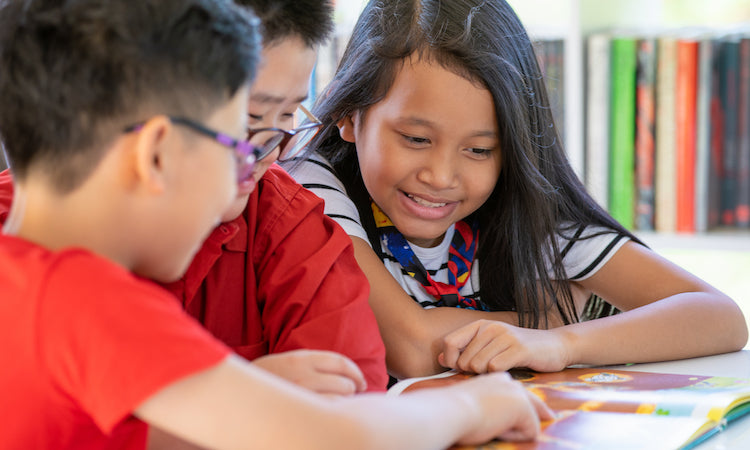By Dr. Geraldine Haggard, Reading Recovery Teacher Leader, Guest Blogger
Common Core State Standards call for the use of descriptive words beginning at the kindergarten level and extend to first grade, where students are expected to understand and use adjectives in reading and writing. The role of describing things is an important part of content areas in every grade. The purpose of today's blog post is to present ideas for using guided and shared reading activities to teach students in first grade about adjectives.
Guided Reading with Snowshoe Hare
Snowshoe Hare is a nonfiction animal book for kids that includes excellent bits of information that correspond to each page that helps teachers facilitate discussions. Introduction to the book should include exploring students' prior knowledge about the Arctic and about rabbits. Explain that they will discover how the snowshoe hare is different and why. Define an adjective and ask them to look for words that describe the rabbit as they read.
 After the reading is done, have students visit each page as you ask the following questions and ask them to write each adjective that they find in their journals.
After the reading is done, have students visit each page as you ask the following questions and ask them to write each adjective that they find in their journals.
- Page 2: What word describes the Arctic? Please write it in your journal.
- Page 3: Which words describe the colors of the fur?
- Page 4: What adjective describes the feet?
- Page 5: What adjectives describe its eyes and ears?
- Page 6: What kind of eater is the rabbit?
Ask the children to tell you what an adjective is. They can select two of the adjectives and write a sentence containing each in their journal. Then have a discussion with them about other things that could be described using the adjectives from the text.
Shared Reading with Wolverine
Explain that you will be introducing the students to an animal known as the wolverine. Ask them to watch the pages as you use an Elmo to read and to listen carefully to be ready to share what they learn about the animal. It might be fun to select a volunteer to use a pointing stick to help the group follow the words as you read them with expression and fluency.
 After you read, ask the students to read each page with you, using the following question:
After you read, ask the students to read each page with you, using the following question:
- Page 2: Where does the wolverine live? What two words describe their home?
- Page 3: What color is its fur? What color are its stripes?
- Page 4: What adjective describes the wolverine’s feet?
- Page 5: What adjective is used to describe its eyes?
- Page 6: What adjective describes the animals the wolverine attack?
You can use pictures on the following pages to encourage students to write adjectives for the face, eyes, and tracks in the snow. Invite volunteers to read some of their sentences, and then close the lesson by asking the students to again define the word adjective .
Guided Writing
On another day, have students select a member of their family to describe. Provide some thinking time. Then elicit words for body parts and provide time for the students to write the words on the top of their sheet, which they can use to create a picture of a family member. As they sketch, have them draw an arrow that connects the adjective at the top of the page to each drawn body part.
Another day could be used to invite the children to share these drawings, which could be put in their portfolios or shared in a book form for the classroom library. Ask once more for the definition of an adjective.
If you're looking for more ways to help you use time wisely as you introduce concepts, as well as provide guided and independent practice of the important strategies, be sure to visit our blog again soon! You'll find great ways to help students achieve success in reading, writing, and other content areas.
 Dr. Geraldine Haggard is a retired teacher, Reading Recovery teacher leader, author, and university teacher. She spent thirty-seven years in the Plano, TX school system. She currently tutors, chairs a committee that gifts books to low-income students, and serves as a facilitator in a program for grieving children. If you like what you read here, you can enjoy
more from Dr. Haggard elsewhere on our blog
.
Dr. Geraldine Haggard is a retired teacher, Reading Recovery teacher leader, author, and university teacher. She spent thirty-seven years in the Plano, TX school system. She currently tutors, chairs a committee that gifts books to low-income students, and serves as a facilitator in a program for grieving children. If you like what you read here, you can enjoy
more from Dr. Haggard elsewhere on our blog
.






